1.11.2017
VV11: Vega to launch an Earth observation satellite for the Kingdom of Morocco
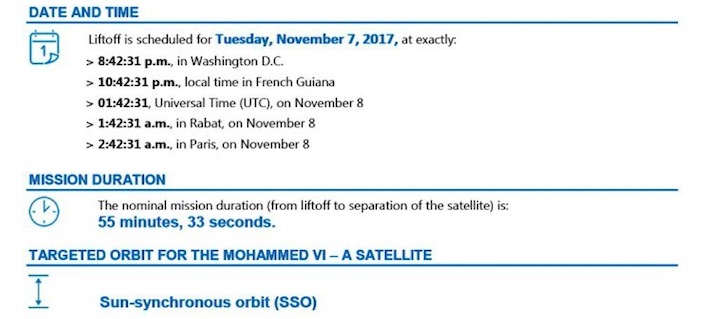
For its 10th launch of the year, and the 11th Vega mission since this launcher began its career at the Guiana Space Center in 2012, Arianespace will orbit the MOHAMMED VI – A satellite.
This Earth observation satellite for the Kingdom of Morocco was developed by a consortium comprising Thales Alenia Space as system prime contractor and Airbus as co-prime.
Flight VV11 marks the eighth Earth observation mission for Vega, a versatile light launcher.
The liftoff will be from the Vega Launch Complex (SLV) in Kourou, French Guiana (South America).
The Launch Readiness Review (LRR) will take place on Monday, November 6, 2017 in Kourou, to authorize the start of operations for the final countdown.
The MOHAMMED VI – A satellite is an Earth observation satellite built for the Kingdom of Morocco by Thales Alenia Space as system prime contractor and Airbus as co-prime.
The MOHAMMED VI – A satellite will be in particular used for mapping and land surveying activities, regional development, agricultural monitoring, the prevention and management of natural disasters, monitoring changes in the environment and desertification, as well as border and coastal surveillance.
Thales Alenia Space, as system prime contractor, supplied the payload, including the optical instrument, the image transmission subsystem, and the ground segment for image processing and production. Airbus, as satellite prime contractor, was in charge of its integration, as well as supplying the platform and the ground segment for mission planning and satellite control.
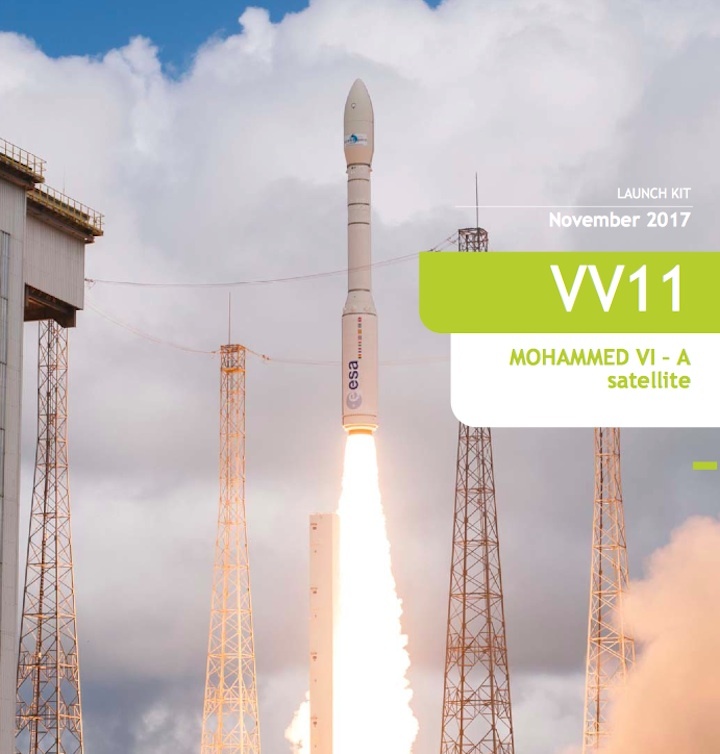
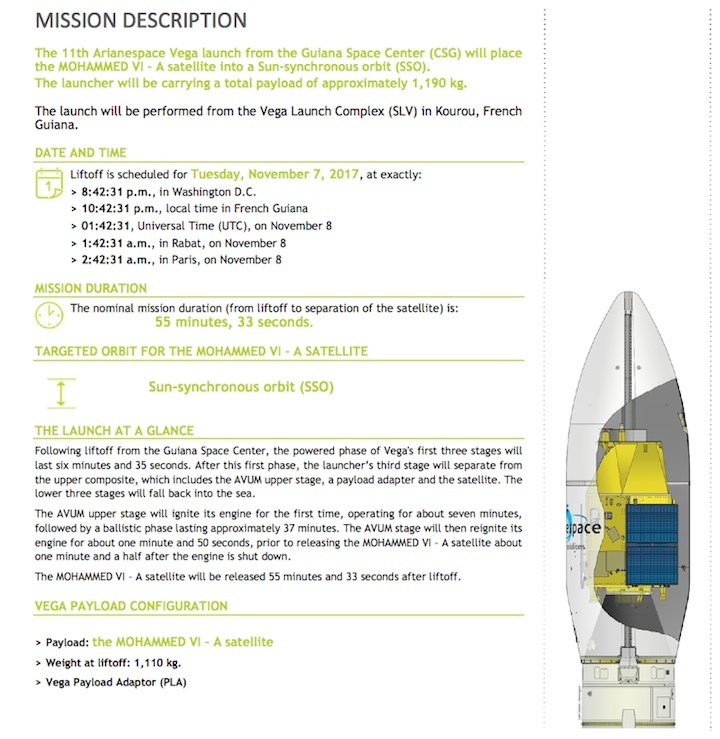
Quelle: arianespace
---
Update: 2.11.2017
In just a week’s Time, Morocco will have its Earth Observation Satellite
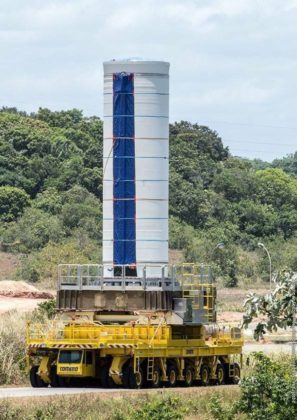
Morocco is about to make a major stride forward in space technology in the region and in Africa at large as it is readying to launch into orbit, in just a week’s time, a state-of-the-art satellite, dubbed the Mohammed VI-A Satellite.
The satellite, which will make of Morocco a space pioneer in Africa, is set to bolster the country’s reconnaissance capabilities.
The main purpose of this equipment will be to monitor what is happening on earth around the clock, with a high quality resolution. The satellite is capable of observing a broad band of some 800 km and is expected to “hover” at 695 km above the surface of the earth.
The earth observation satellite will be, in particular, used for mapping and land surveying activities, regional development, agricultural monitoring, the prevention and management of natural disasters, monitoring changes in the environment and desertification, as well as border and coastal surveillance.
Actually, this space-based imaging system, piloted from Morocco, will play a key role in the implementation of national socio-economic development strategies, primarily those relating to the agricultural sector, which is a core sector in the country’s economy.
In this vein, the satellite will enable Morocco to manage better its forestry and pastoral resources; as well as its water resources, besides facilitating groundwater prospecting.
The advanced technological equipment will also strengthen the capacities of national agencies in charge of mapping and land surveying activities, the agencies entrusted with the surveillance of road infrastructure, transport networks and the coastline, which extends over 3000 km.
It will likewise offer environmental applications that will help the North African country consolidate its environmental strategy and honor the environmental commitments it made, especially at the COP21 and COP22 held respectively in Paris and Marrakech in 2015 and 2016.
Morocco’s entry into the satellite era will also offer new perspectives in the field of spatial planning, through effective monitoring of housing and construction, and a subsequent tighter follow-up of slums eradication operations.
The agreement to build the satellite, signed by Morocco and France in 2013, was shrouded in secrecy and it is only recently, as the spacecraft launch was nearing, that the information was disclosed.
Built by Thales Alenia Space as system prime contractor and Airbus as co-prime, the Moroccan satellite, worth some €500 million, will be launched in the early hours of Wednesday November 8 from the European space port of Kourou in French Guiana using an Italian Vega rocket.
Quelle: The North Africa Post
---
Update: 5.11.2017
.

- LAUNCH VEHICLE
- Vega
- LAUNCH DATE
- November 7, 2017
- CUSTOMER(S)
- Thales Alenia Space and Airbus for Kingdom of Morocco
- STATUS
- Upcoming
- PAYLOAD(S)
- MOHAMMED VI – A satellite
- PRIME CONTRACTOR(S)
- Thales Alenia Space, Airbus
- LAUNCH SITE
- Spaceport, French Guiana (Guiana Space Center)
- ORBIT
- Sun-Synchronous orbit
MISSION
DESCRIPTION
Flight VV11: Vega to launch an Earth observation satellite for the Kingdom of Morocco
For its 10th launch of the year, and the 11th Vega mission since this launcher began its career at the Guiana Space Center in 2012, Arianespace will orbit the MOHAMMED VI – A satellite. This Earth observation satellite for the Kingdom of Morocco was developed by a consortium comprising Thales Alenia Space as system prime contractor and Airbus as co-prime.
Flight VV11 marks the eighth Earth observation mission for Vega, a versatile light launcher.
- WASHINGTON D.C.
- 8:42:31 P.M.
- FRENCH GUIANA
- 10:42:31 P.M.
- UNIVERSAL TIME (UTC)
- 1:42:31
- RABAT, MOROCCO
- 1:42:31 A.M.
- PARIS, FRANCE
- 2:42:31 A.M.
PAYLOAD
- MOHAMMED VI – A Satellite
-
The MOHAMMED VI – A satellite is an Earth observation satellite built for the Kingdom of Morocco by Thales Alenia Space as system prime contractor and Airbus as co-prime.
The MOHAMMED VI – A satellite will be in particular used for mapping and land surveying activities, regional development, agricultural monitoring, the prevention and management of natural disasters, monitoring changes in the environment and desertification, as well as border and coastal surveillance.
A three-axis stabilized satellite, the MOHAMMED VI – A satellite will weigh approximately 1,110 kg. at launch.
Thales Alenia Space, as system prime contractor, supplied the payload, including the optical instrument, the image transmission subsystem, and the ground segment for image processing and production. Airbus, as satellite prime contractor, was in charge of its integration, as well as supplying the platform and the ground segment for mission planning and satellite control.
The MOHAMMED VI – A satellite is the 150th satellite built by Thales Alenia Space to be launched by Arianespace, which has 15 more satellites from this manufacturer in its order book.
COUNTDOWN
AND FLIGHT
- Events
-
-
- - 09H 10MN
- Start of final countdown
-
- - 06H
- Activation of Multi-Functional Unit (MFU)
-
- - 05H 40MN
- Activation of Inertial Reference System (IRS)
-
- - 05H 40MN
- Activation of telemetry
- SHOW THE COUNTDOWN
-
- LIFTOFF
- 00:00
- SHOW THE COUNTDOWN
-
- + 00H 55MN 33S
- Separation of the MOHAMMED VI - A satellite
-
- + 00H 47MN 44S
- 3rd ignition of AVUM
-
- + 00H 49MN 2S
- 3rd cut-off of AVUM
-
- Quelle: arianespace
- ---
- Update: 7.11.2017
- -
- Countdown für VV-11-Vega PARIS, FRANCE 2:42:31 A.M.
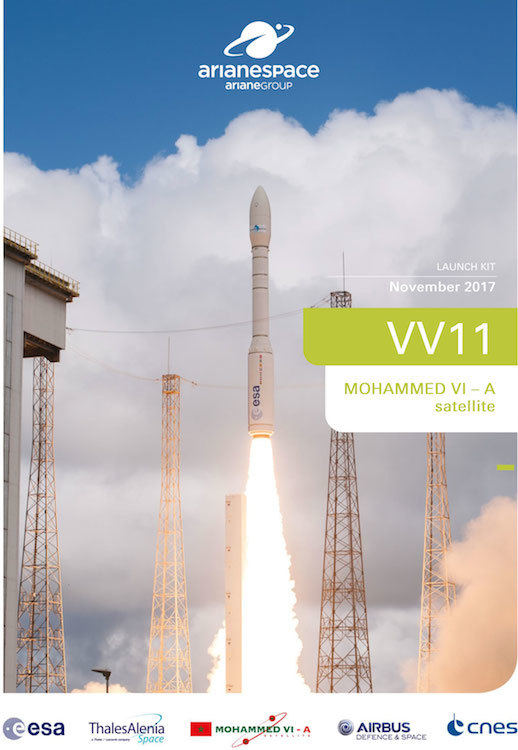
- Quelle: arianespace
- +++
- Update: 8.11.2017
- -
- Succeful Launch VV11-Vega mit MOHAMMED VI – A Satelliten
- Frams:
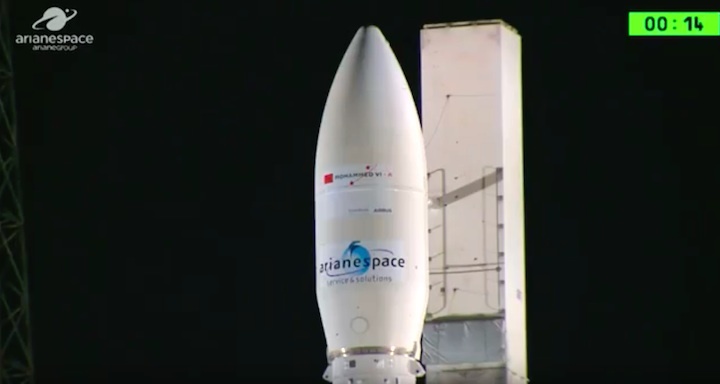
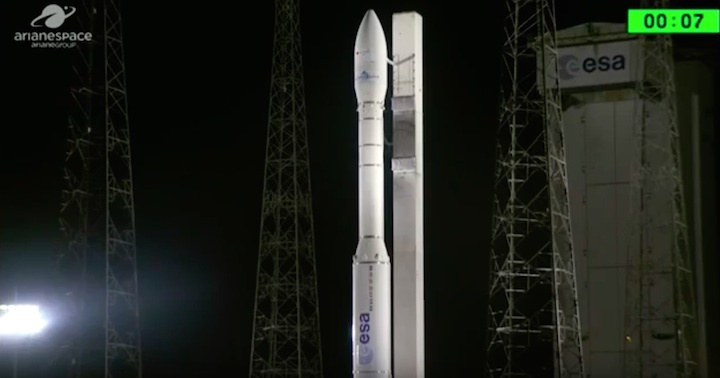
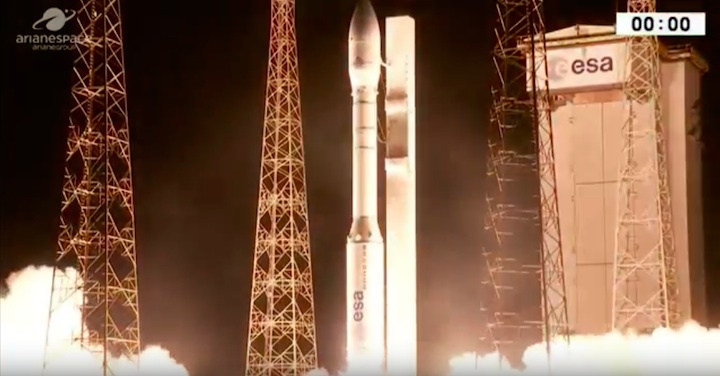
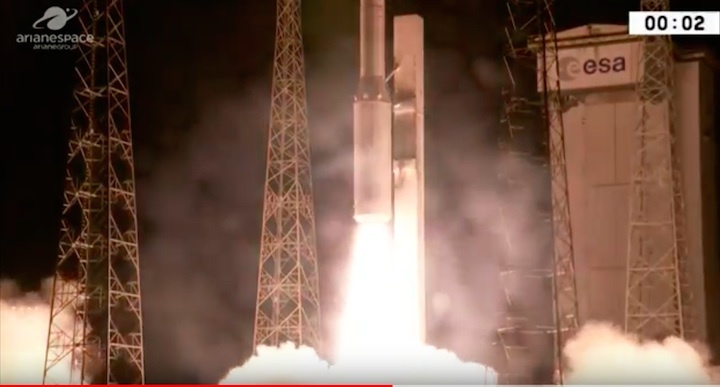



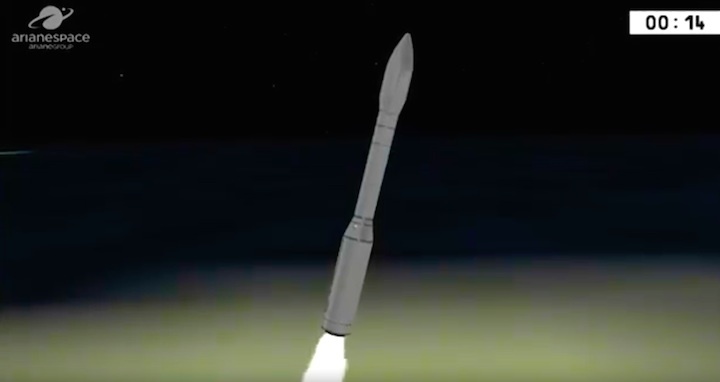
- Quelle: arianespace
- +++
VEGA LAUNCHES EARTH OBSERVATION SATELLITE FOR MOROCCO
8 November 2017Arianespace has launched a Vega rocket to deliver an Earth observation satellite into orbit for the Kingdom of Morocco.
Liftoff of Vega’s 11th mission from Europe’s Spaceport in Kourou, French Guiana came at 01:42 GMT on 8 November (02:42 CET; 22:42 local time on 7 November).
With a mass at liftoff of 1110 kg, Mohammed VI-A was manoeuvred into its target Sun-synchronous orbit about 55 minutes into the mission after a series of burns of Vega’s upper stage.
Complying with debris regulations to help keep space clean, Vega’s upper stage fired a final time to burn up high in the atmosphere over the ocean.
Vega is a 30 m-high, four-stage vehicle designed to accommodate small scientific and Earth observation payloads of 300–2500 kg, depending on the orbit.
Quelle: ESA

